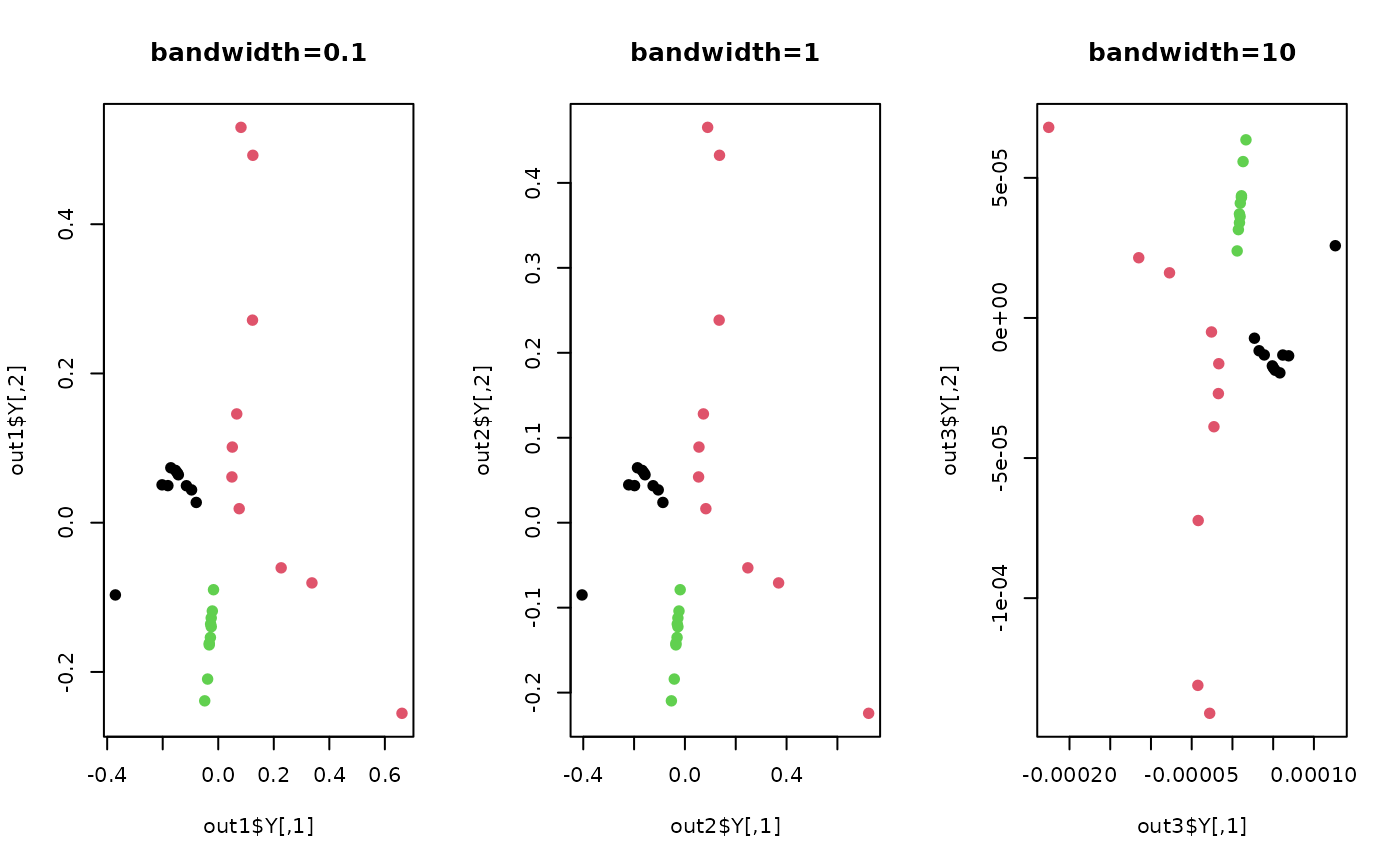Kernel LSDA (KLSDA) is a nonlinear extension of LFDA method using kernel trick. It applies conventional kernel method
to extend excavation of hidden patterns in a more flexible manner in tradeoff of computational load. For simplicity,
only the gaussian kernel parametrized by its bandwidth t is supported.
Arguments
- X
an \((n\times p)\) matrix or data frame whose rows are observations and columns represent independent variables.
- label
a length-\(n\) vector of data class labels.
- ndim
an integer-valued target dimension.
- preprocess
an additional option for preprocessing the data. Default is "center". See also
aux.preprocessfor more details.- alpha
balancing parameter for between- and within-class scatter in \([0,1]\).
- k1
the number of same-class neighboring points (homogeneous neighbors).
- k2
the number of different-class neighboring points (heterogeneous neighbors).
- t
bandwidth parameter for heat kernel in \((0,\infty)\).
Value
a named list containing
- Y
an \((n\times ndim)\) matrix whose rows are embedded observations.
- trfinfo
a list containing information for out-of-sample prediction.
References
Cai D, He X, Zhou K, Han J, Bao H (2007). “Locality Sensitive Discriminant Analysis.” In Proceedings of the 20th International Joint Conference on Artifical Intelligence, IJCAI'07, 708--713.
Examples
## generate 3 different groups of data X and label vector
x1 = matrix(rnorm(4*10), nrow=10)-50
x2 = matrix(rnorm(4*10), nrow=10)
x3 = matrix(rnorm(4*10), nrow=10)+50
X = rbind(x1, x2, x3)
label = rep(1:3, each=10)
## try different kernel bandwidths
out1 = do.klsda(X, label, t=0.1)
out2 = do.klsda(X, label, t=1)
out3 = do.klsda(X, label, t=10)
## visualize
opar <- par(no.readonly=TRUE)
par(mfrow=c(1,3))
plot(out1$Y, col=label, pch=19, main="bandwidth=0.1")
plot(out2$Y, col=label, pch=19, main="bandwidth=1")
plot(out3$Y, col=label, pch=19, main="bandwidth=10")
 par(opar)
par(opar)